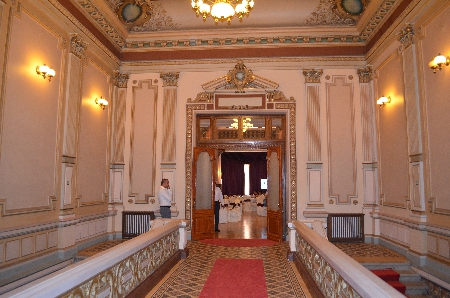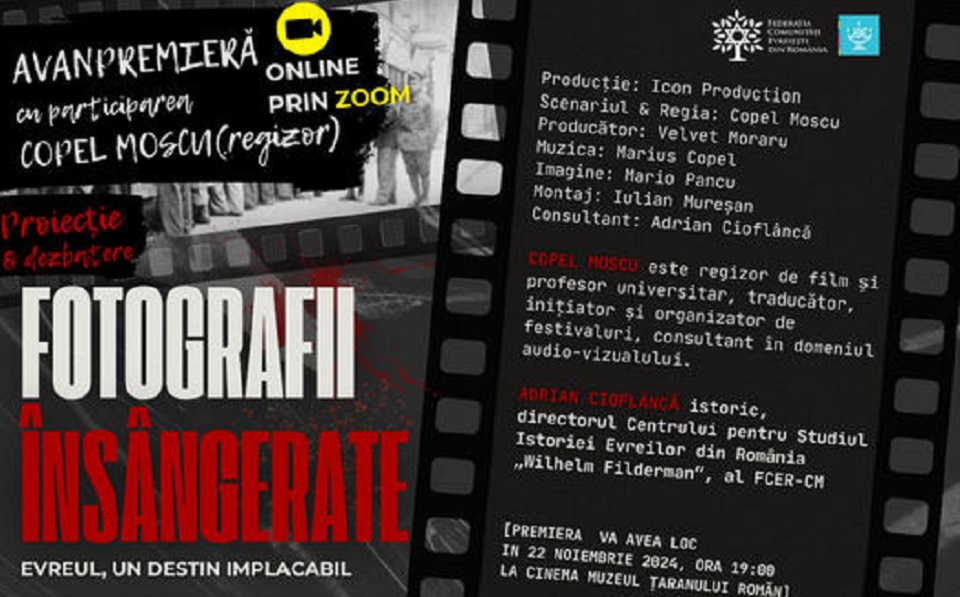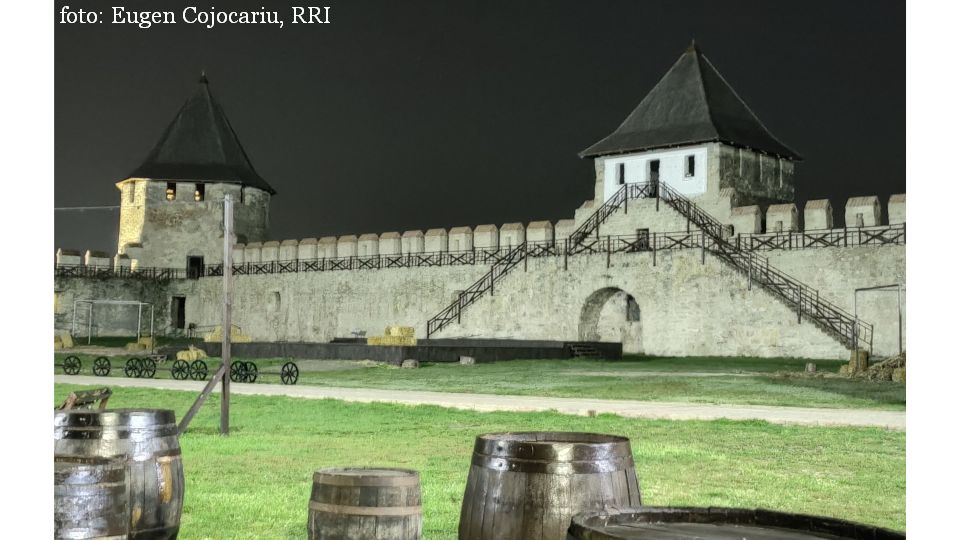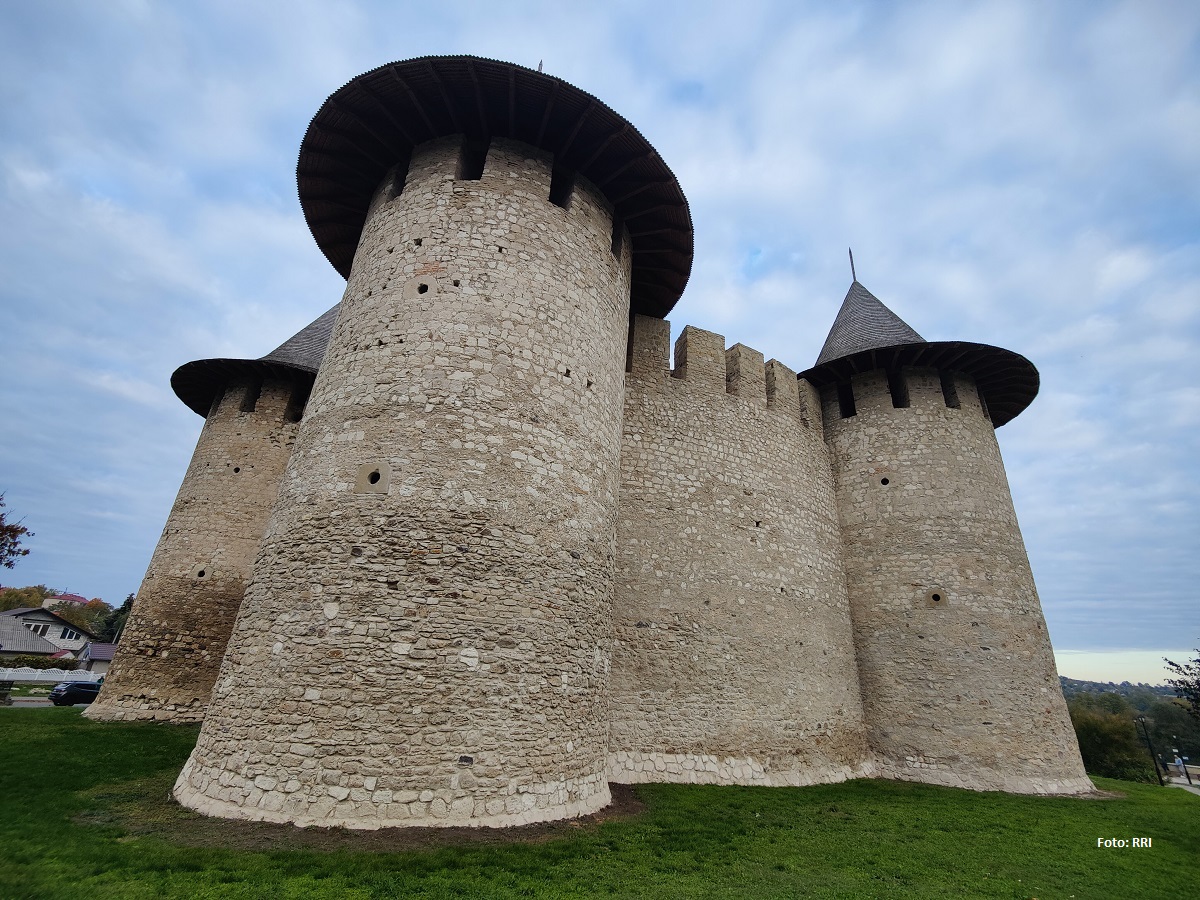The Bragadiru Palace in Bucharest
On the southern outskirts of Bucharest, once suggestively called the Beggars Bridge, a beautiful, towering building was erected at the beginning of the 20th century, which the locals used to refer to as the Colossus.

Christine Leșcu, 19.01.2013, 12:59
This building was the property of Dumitru Marinescu, one of the first and most important capitalists in Bucharest, who built a beer factory and houses for workers on the 10 hectares of land he had bought near the Metropolitan Hill, on the Beggars’ Bridge. Dumitru Marinescu had humble origins, but got rich thanks to the tenacity and business skills that defined the first days of capitalism. The Colossus is still in place today. It is now called “The Bragadiru Palace — The Colosseum Hall”. Crina Deaconescu, a representative of the company that administrates the Palace, tells us more about its founder.
Crina Deaconescu: “Born in 1842 in a decent, rather poor family, Dumitru Marinescu was the son of a shingle maker, named Marin. He started working at the age of 16 in the distillery of Iancu Stefanescu. During his first years of work, he stood out as very bright and hardworking. That’s why Iancu Stefanescu soon made him his associate. When Iancu Stefanescu was out of town with business, he would leave Dumitru in charge with the brandy factory and would forbid him to buy anything while he was away. Nevertheless, Dumitru would buy surgical spirit on his own, and started making money by himself. His business was most profitable during the Independence War of 1877, when the surgical spirit was in high demand, being used to disinfect wounds. The money he earned was used to build the first refined alcohol factory in the village of Bragadiru, close to Bucharest. At the end of the 19th century, Dumitru Marinescu realized that the beer production in southern Romania was almost inexistent, so in 1884 he started building a beer factory. The factory was called “Bere Bragadiru”- Bragadiru Beer until it was seized by the state on June 11th, 1948, when it was renamed as “Rahova Beer”.
After he bought the estate in Bragadiru, near Bucharest, Dumitru Marinescu added his name to that of the commune. With commercial and financial success already in place, he started focusing on helping the community as well. He used to grant scholarships to young people willing to study, abroad or in Romania, and supported the children of his workers, who wanted to work in agriculture or horticulture. In the early 20th century he built near the beer factory a palace, whose role was, among other things, to provide relaxation for his workers.
Crina Deaconu: “ The construction of the colossus started around the year 1905. In principle, it was designed to be a culture palace. It observed an old tradition of the beer factory and had a special facility for the factory workers. It was built based on the plans drawn up by the Austrian architect Anton Shuckerl in 1894. It’s an impressive building, thanks to its size, architecture and decorations. The building has a garden and a summer terrace that harmoniously integrated into the eclectic architecture, with spiraled stairs and inlays, statues on the façade, Venetian mirrors and loggias built in Victorian style. We can state that the Bragadiru Palace is still the most impressive building of the old Bucharest. It also has a spectacular ballroom, and it can be used as a theatre or concert hall. Back then, the palace used to host a library and a bowling room. Also, there were shops and offices on the ground floor. In terms of style, the Bragadiru Palace comprises the styles of the most famous buildings in Bucharest.”
The days of glory of the Bragadiru Palace would end with the 1848 nationalization, when the state seized it. The Collossus became a house of culture, neglected and turned to ruin. Its fate started to improve in 2003, when its rightful owners, heirs to Dumitru Marinescu Bragadiru, were returned the property. Today, fully refurbished, the Bragadiru Palace plays host to weddings, balls and other social and cultural events.






























